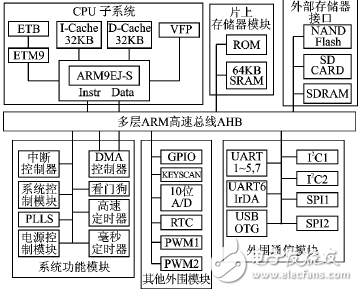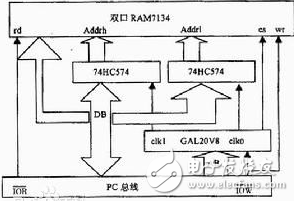The data bus is used to transfer data. Each data line carries one binary bit, and 8 bits transmit exactly one byte.
But the address bus is the transfer address, each of which also transmits a binary bit, and the eight address lines carry eight binary bits. These 8 binary bits have 2^8 different variations, so they can be used to transfer addresses of 2^8 different memory locations, that is, 256B can be addressed with 8 address lines.
2, the role of the address bus and data busData Bus

(1) A channel for data transfer between the CPU and memory or other devices.
(2) The width of the data bus determines the data transfer speed between the CPU and the outside world.
(3) Each transmission line can only transmit 1 bit of binary data at a time. Eg: 8 data lines can transmit one 8-bit binary data (ie one byte) at a time.
(4) The data bus is the sum of the number of data lines.
Address bus

(1) The CPU specifies the storage unit through the address bus.
(2) The address bus determines the maximum amount of memory space that the cpu can access. Eg: The maximum memory that can be accessed by 10 address lines is 1024-bit binary data (1B)
(3) The address bus is the sum of the number of address lines.
The data bus DB is used to transfer data information. The data bus is a bidirectional tri-state bus, that is, it can transfer CPU data to other components such as memory or I/O interface, and can transfer data of other components to the CPU. The number of bits in the data bus is an important indicator of the microcomputer and is usually consistent with the word length of the microprocessor. For example, the Intel 8086 microprocessor has a 16-bit word length and a data bus width of 16 bits. It should be pointed out that the meaning of data is generalized, it can be real data, it can also command code or status information, and sometimes even a control information. Therefore, in actual work, the data bus does not necessarily transmit It is the true meaning of the data.
The address bus AB is dedicated to the transfer of addresses. Since the address can only be transferred from the CPU to the external memory or I/O port, the address bus is always unidirectionally tri-stated, which is different from the data bus. The number of bits in the address bus determines the size of the memory space that the CPU can directly address. For example, if the address bus of an 8-bit microcomputer is 16 bits, the maximum addressable space is 216=64 KB, and the address bus of the 16-bit microcomputer is 20 bits. The addressable space is 220=1MB. In general, if the address bus is n bits, the addressable space is 2n bytes.
3, the width of the address bus and data bus(1) The width of the data bus, depending on the size of the addressable memory component, determines how much memory can be accessed.
For example, a 16-bit wide address bus (usually used in 8-bit processors in 1970 and early 1980) reaches 2 to the 16th power = 65536 = 64KB memory address, and a 32-bit address bus (usually In a PC processor like the current 2004) it is possible to address an address of 4,294,967,296 = 4GiB.
(2) The width of the address bus, depending on the size of the addressable memory component, determines how much memory can be accessed.
For example: a 16-bit wide address bus (usually used in 8-bit processors in 1970 and early 1980) reaches the 16th power of 2 = 65536 = 64 KB of memory address, and a 32 The bit unit address bus (usually in a PC processor like today's 2004) can be addressed to 4,294,967,296 = 4 GB of address. But now a lot of computer memory is already larger than 4G (Windows XP x32 bit system can only recognize 3.29G, so you need to use windows x64 bit system to use more than 4G). So the current mainstream computers are 64-bit processors, which means that they can be addressed to addresses of 2^64=16X10^18=16EB. This number is inexhaustible for a long time.
Conecting Terminals Without Screws
Conecting Terminals Without Screws,Cold Pressing Terminals,Low Pressure Cold Shrinkage Terminal,Cold Shrinkage Cable Terminals
Taixing Longyi Terminals Co.,Ltd. , https://www.longyicopperterminals.com
